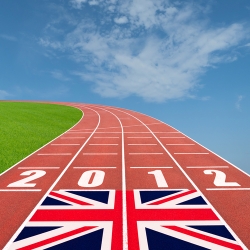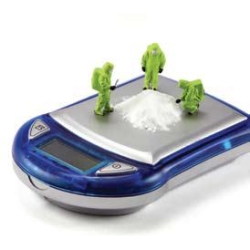 In the field of sports medicine there is no greater ambassador than Dr Richard Budgett. He has been the Chief Medical Officer to Team GB for the past six consecutive Summer and Winter Olympic games and is the current CMO to the London Olympics in 2012.
In the field of sports medicine there is no greater ambassador than Dr Richard Budgett. He has been the Chief Medical Officer to Team GB for the past six consecutive Summer and Winter Olympic games and is the current CMO to the London Olympics in 2012.
His personal achievements in sport include assisting Sir Steve Redgrave to the first of his five consecutive gold medals winning the Men’s Coxed Fours at the 1984 Los Angeles Olympic Games. He is currently Chairman of British Association of Sports and Exercise Medicine (BASEM) and Lead Physician EIS South East.
JuniorDr’s Ivor Vanhegan spoke to Richard Budgett about his career and the future of sports medicine in the UK.
What was your general medical training that lead to your career in Sports and Exercise Medicine?
After completing my medical degree at the Middlesex Hospital I quickly chose a training path in general practice with a view to going into some form of sports and exercise medicine (SEM). I was a keen rower and wanted to see how I could get involved in sports as a doctor. I completed a diploma in sports medicine which was being offered at that time by The Royal London Hospital. I had previously done some research at the newly opened British Olympic Medical Centre in Northwick Park Hospital during my first year of GP training which had concreted my interest in the field. That led to my continued research interest into fatigue and underperforming athletes which has now become known as ‘unexplained underperformance syndrome’.
Initially I split my time 50:50 between General Practice and Sports Medicine but in 2004 I went full time into SEM. I was the Director of Medical Services for the British Olympic Association from 1994-2007. I have also been the Chief Medical Officer with Team GB at the last six summer and winter Olympic Games in Atlanta, Nagano, Sydney, Salt Lake City, Athens and Turin.
What aspect of athlete treatment are you involved with: general physical wellbeing or only musculo-skeletal injury?
There is an increasing body of evidence to say that the two go hand in hand. Taking a common cold as an example: as well as adequate treatment of the symptoms one must consider isolation from other members of the squad, when and to what extent the individual can return to training and how to implement preventative measures for the future.
As a growing specialty we can only base our decisions on presumed best practice and available evidence, however, taking this holistic approach does appear to be working. Certainly more rigorous research in the area is required and we rely on journals such as the British Journal of Sports Medicine to increase the evidence base.
What is the current situation of SEM Training in the UK?
Things have progressed enormously in the last few years since SEM training officially started in London in February 2007. The training programme currently has 16 places with four ST3 vacancies annually; there are a further 16 ST posts nationwide.
The programme runs from ST3 to ST6 with applicants mainly coming from Core Medical Training but also from General Practice Training posts and ACCS trainees. Now that the specialty is affiliated to two Royal Colleges, has formalised training and is increasing research, I feel the UK has become a leader in SEM and has overtaken the likes of Australia and The United States in this regard.
How can an interested trainee get involved in SEM?
Before making the commitment to something like the diploma I would first suggest immersing yourself in the profession to see if it is right for you. Getting involved in sports medicine in any capacity is always a bonus and assisting as a paramedic doing crowd work is always a good place to start. From there I would highly recommend any of the introductory weekend courses run by BASEM to provide a good idea of what’s involved.
What is your role for London 2012?
In February 2007 I was appointment Chief Medical Officer for the 2012 games in London. Unusually for me this meant I spent my entire time at the Beijing 2008 Olympic Games more as an observer than actually as a treating doctor.
My general remit is to ensure the safe medical care for the athletes themselves, their coaches and auxiliary staff, spectators, dignitaries and anyone else who is present at the Games. The numbers run into the many thousands which presents a logistical challenge.
Furthermore, you have to consider that the Games will be spread over 36 sites: the main Olympic Park in Stratford, tennis in Wimbledon, Triathlon in Hyde Park, Rowing in Dorney Lake Eton, sailing in Weymouth, and the football at multiple locations around England, Scotland and Wales with the final in Wembley.
In effect we will be setting up a polyclinic within the Olympic Village with MRI, CT, x-ray and diagnostic ultrasound facilities available. There will be some of the country’s top musculo-skeletal radiologists on hand as well as other appropriately trained senior doctors to provide immediate and expert advice.
The Homerton Hospital in East London will be the main referral centre for athletes at Stratford, and University College London Hospital for those closer to central London.
We have ensured that they will have a fast, efficient and discrete service to fast-track them to the relevant services they require in each of these hospitals to ensure optimum care. The Royal London will be the port of call for major trauma.
You must have come across so many weird and wonderful things given the breadth of your work?
It’s the constant variation that makes this such a brilliant career to go into. One particular event I can recall was when I was at the Beijing Games. As I mentioned I was only meant to be there in an overseeing capacity and not as a treating doctor.
There was one occasion however, when I was out at the rowing venue which was near the Great Wall of China. The family of an athlete who had recently won a medal were caught in a freak thunder storm and they all sought refuge in one of the towers.
Due to bad luck the tower was hit by lightening and everyone inside sustained a mild shock but about three people were affected more severely.
Unfortunately, one of those hit was the brother of this athlete who, for reasons better known to himself, had chosen not to wear any shoes. As you can imagine, the lightening was able to pass straight through him and knocked him out cold for well over a minute.
As the nearest British medic on hand I saw him 30minutes later and had to rack my brains as how to and manage victims of lightening strikes. I must admit it had been some time since I’d even read up on what to do in such circumstances but am pleased to report that he made a full and uneventful recovery.
With special thanks to Lynn Morris, medical administrator at Bisham Abbey.
Suggested Resources
London Deanery info for applicants to SEM
www.londondeanery.ac.uk/specialty-schools/sport-and-exercise-medicine
British Association of Sports Exercise Medicine
www.basem.co.uk
Faculty of Sport & Exercise Medicine (UK) – Specialty Training and Diploma information
www.fsem.co.uk
Voluntering for London 2012
www.london2012.com/get-involved/volunteering/the-volunteer-programme.php



